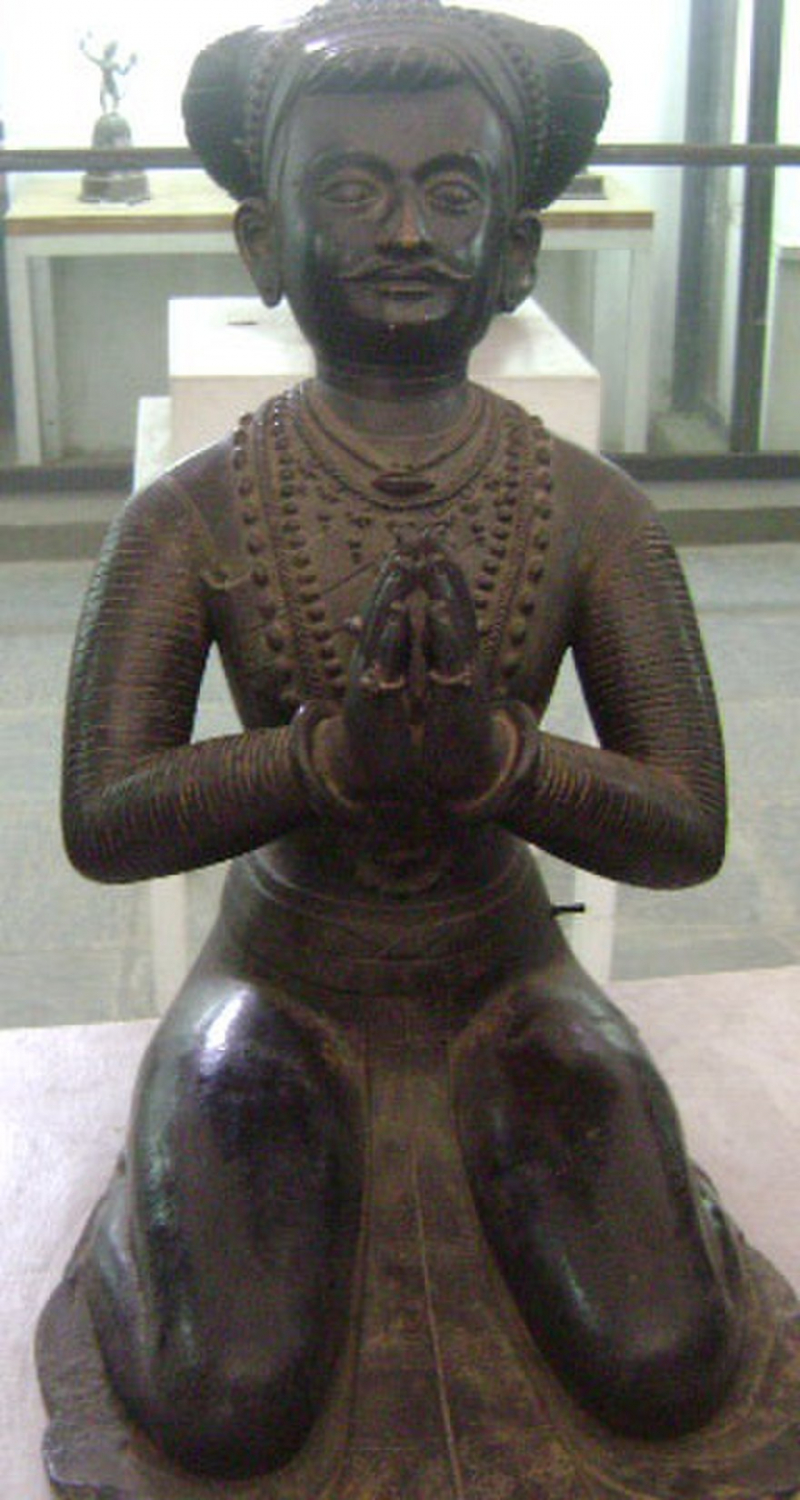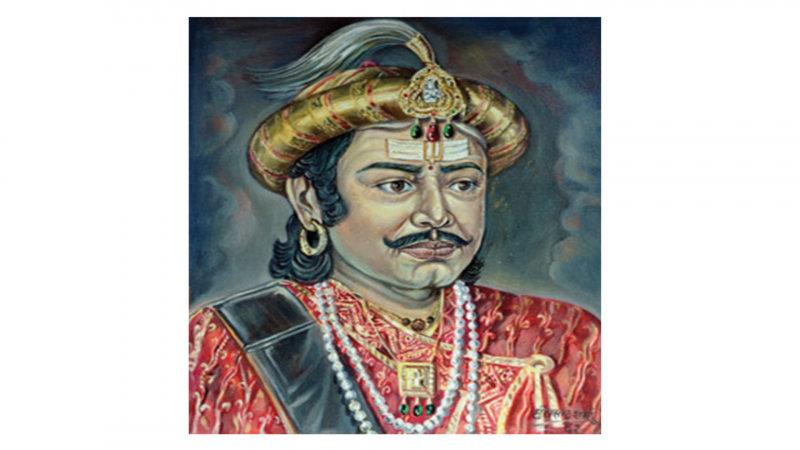Amshuverma
Amshuverma or Amshu Verma (595 CE - 621 CE) rose to the position of Mahasamanta (equivalent to prime minister) around 595 CE during the reign of King Sivadev I in Nepal's Licchavi (kingdom). Amshuverma reduced Sivadeva to a mere figurehead within years of his appointment as Samanta, a feudal lord, in 604 AD. His reign appears to have ended before 621 AD, when crown prince Udayadev ascended to the throne.
Amshuverma took the title of Pashupati Bhattarak being in Shaivite majority period. The meaning of Sanskrit word Bhattaraka is noble lord. He is believed to have been a son of a brother of the queen of Sivadeva. He was a learned, bold and farsighted ruler of the Licchavi (kingdom) period, he was also a lover of art, architecture and literature. He built Kailashkut Bhawan palace, which became famous as a state of the art palace south of the Himalayas in the seventh century.
The Chinese ambassador Wang Huen Che who was appointed about 640 AD makes a graphic description of its grandeur in Tang Annals of China. The appointment of the Chinese ambassador to the court of Nepal in the seventh century shows that a very close relationship pertained between Nepal and China already.
Many Tibetan accounts make Bhrikuti the daughter of Amshuverma. If this is correct, the marriage to Songtsän Gampo must have taken place sometime before 624 CE. Acharya Kirti Tulku Lobsang Tenzin, however, states that Songstän Gampo married Bhrkuti Devi, the daughter of king "Angsu Varma" or Amshuvarma (Tib: Waser Gocha) of Nepal in 632.
According to some Tibetan legends, however, a Nepali king named Go Cha (identified by Sylvain Lévi as "Udayavarman", from the literal meaning of the Tibetan name) was said to have a daughter called Bri-btumn or Bhṛkuti. "Udayavarman" was most likely the same king we know as Udayadeva, the son of Śivadeva I and later, the adopted son and heir to Aṃshuvarmā. He was also thought to be the father of Narendradeva (Tib: Miwang-Lha). If this is accepted, it means that Narendradeva and Bhrikuti Devi were brother and sister.
It is believed that Udayadev was exiled to Tibet and his daughter, Bhrikuti, was married to the Tibet Emperor Tsrong-tsang Gompo. This event appears to have opened trade routes between Nepal and Tibet. Some early historians in Nepal had mistakenly concluded that the pictographic symbol used to name the father of Bhrikuti in Tang Annals stood for Amshu (which means the rays of the rising sun in Sanskrit, the language used in Nepal then), where as Udaya (the rise of the sun) would also be written with the same symbols. Bhrikuti could not have been Amshuverma's daughter simply because she would be too old to marry the Tibet Emperor. Bhrikuti was daughter of Udayadev and she had dispatched the Tibetan army to Nepal valley to reinstate Narendradev, her brother, as king in Nepal about 640 AD. Bhrikuti was instrumental in spreading Buddhism to Tibet and she later attained the status of Tara, the shakti in Mahayana Buddhism.
The Chinese Buddhist monk Xuanzang, who visited India during the 7th century, described Aṃshuvarmā as a man of many talents. The original temple of Jokhang in Lhasa was modeled after a Nepali monastery design - a square quadrangle with the kwa-pa-dyo shrine at the center of the east wing, opposite to the entrance. The innermost shrine room of the world heritage Jokhang temple still displays the woodwork of Nepali origin and craftsmanship. Since then, and specially after the contributions of Araniko, a Nepali bronze caster and architect who was sent to Tibet to cast a stupa in 1265 AD, Nepali art and architecture spread over the countries like China and Japan. An inscription by Aṃshuvarmā dated to 607 AD at Tistung professes the importance of the "Aryan code of conduct" (i.e. the caste system).
A great feat of architecture and engineering, the Kailashkut Bhawan, is believed to have been located about Hadigaun in Kathmandu. It had three courtyards and seven storied tiered structure with grand water works and inlay stone decorations. Amshuverma also introduced the second Licchavi era (samvat). Economically, Nepal was much developed during his time. His ruling period is known as the 'Golden Period' in the history of Nepal












